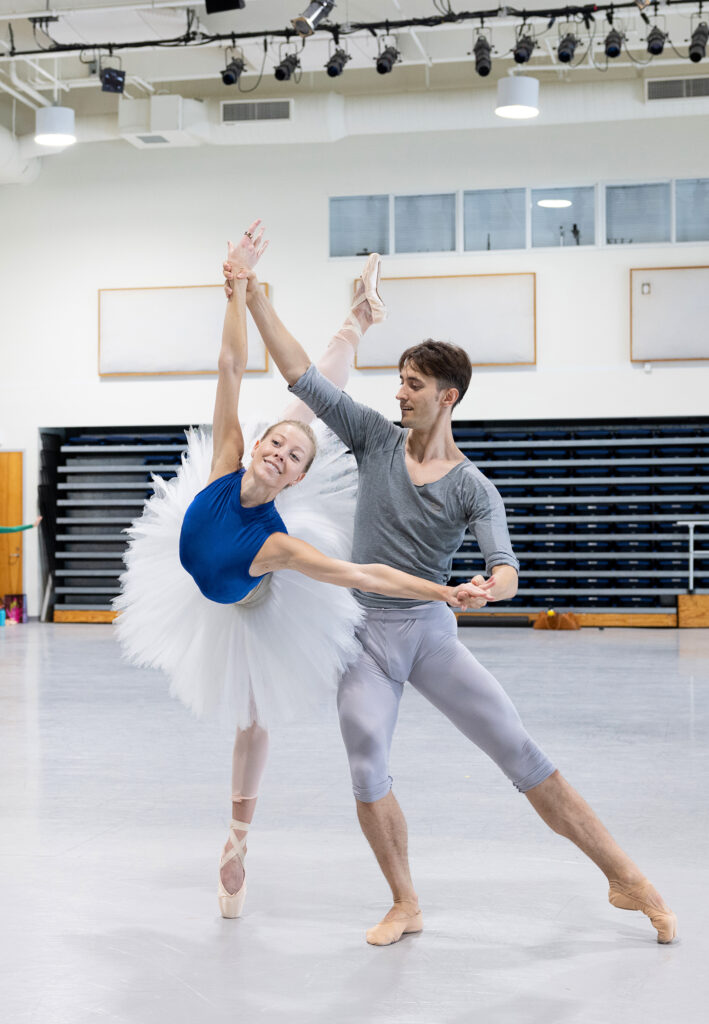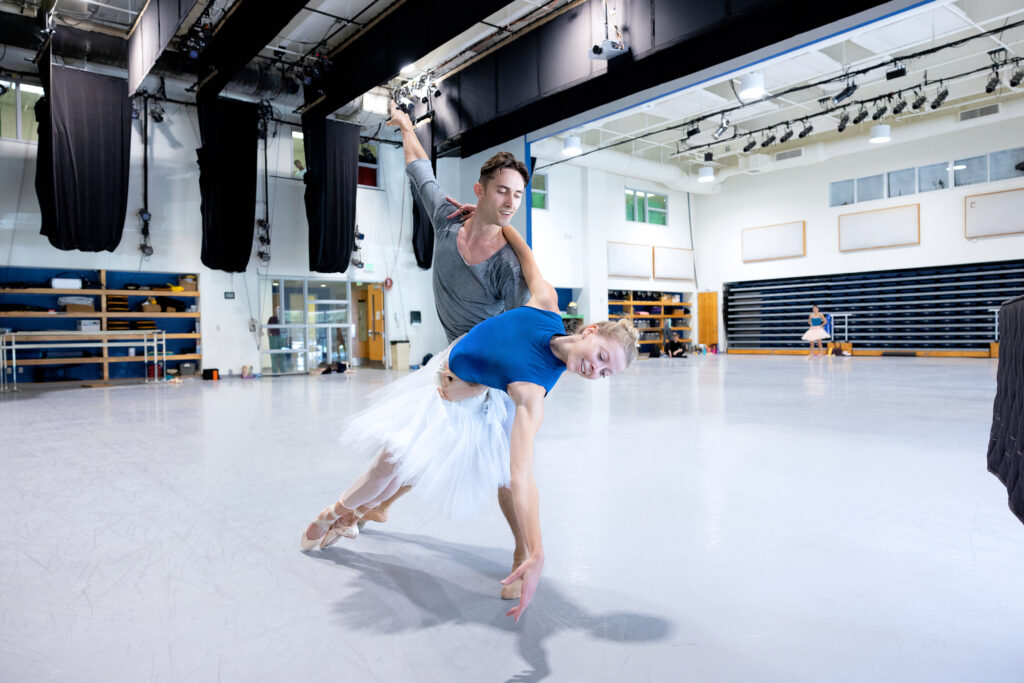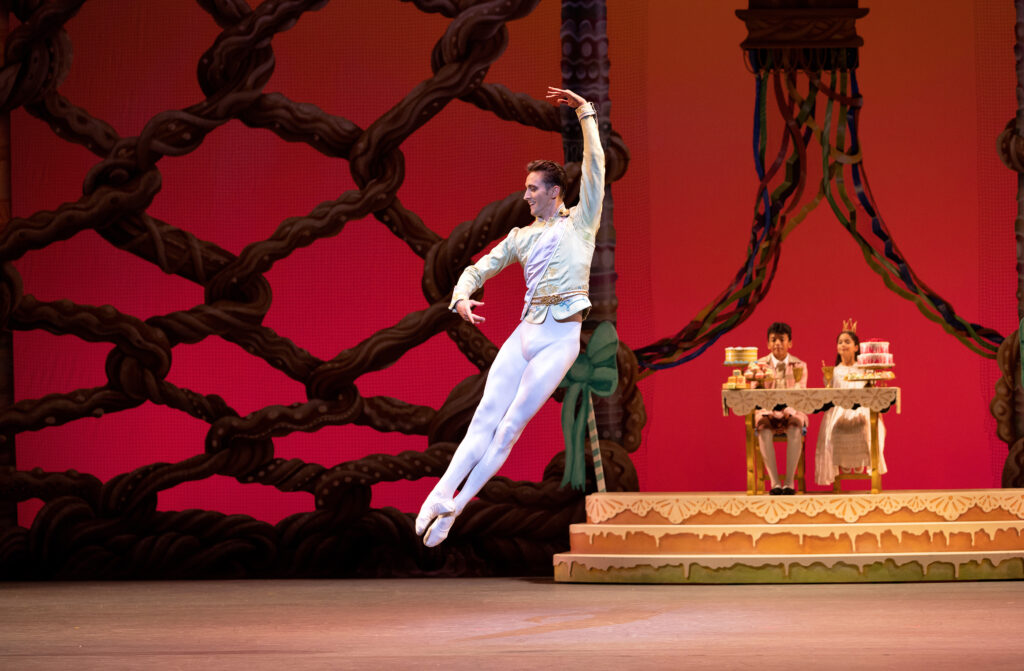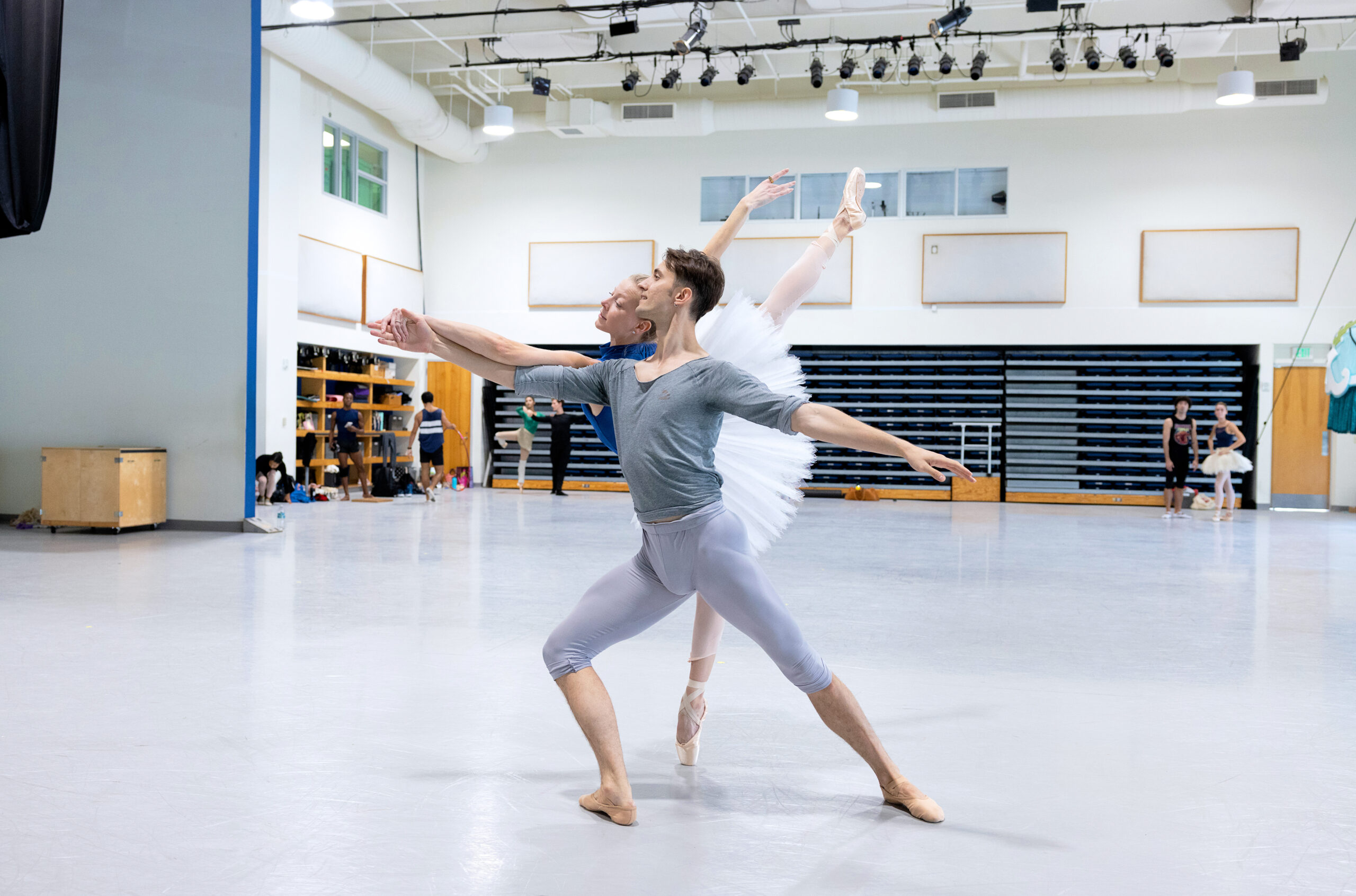Ukrainian Dancer Stanislav Olshanskyi Finds His Place at Miami City Ballet
“It feels strange sometimes,” the Ukrainian dancer Stanislav Olshanskyi, who recently joined Miami City Ballet, says of his new life in Miami. “The weather is always nice, there are iguanas and birds, and I can see water from my apartment.” He pauses for a moment, reflecting on his new life. “And yet it’s the same world where there is a war going on in Ukraine, where bad things happen and people are dying.”
This is the central contradiction in Olshanskyi’s life now, more than a year into Russia’s invasion of Ukraine, the country where he was born and where he lived and worked until February of 2022. His social media reflects this, with posts that flip between news about the war and videos of rehearsals at the company studios in Miami Beach or of his latest home-cooked meal (he is a skilled cook).
Olshanskyi is from Kremenets, a pretty city with a population of 20,000 in Western Ukraine known for its 12th-century fortress on a hill. Neither of his parents is a dancer, but both he and his older brother Valeriy began training at an early age. His brother grew up to be a longtime member of the Virsky Ukrainian National Folk Dance Ensemble. At age 9, Stanislas, or Stas, as he is known, departed, alone, for the Kyiv State Choreographic School to study ballet. “I don’t remember anything about that first year,” he says. “I think I blocked it out. One of the teachers told me later that I used to sit on the stairs and cry because I missed my mom.” It was also during his time at the school that he first heard Russian spoken.

It’s surprising to anyone who has seen him dance, but Olshanskyi wasn’t a particularly motivated student, he says, nor was he encouraged by his teachers. “I had to fight with my body every day. I was not flexible and I did not have muscles. I was very, very skinny.” He was told that even if he managed to get hired he would probably be stuck in the corps his whole career.
But he persevered. “I like a challenge,” he says. And on graduation, though not taken by the national ballet company in Kyiv, he did find a spot at the Lviv National Opera House, a smaller and slightly less prestigious troupe in the west of the country, at the age of 17. (He’s now 29.)
Despite his teacher’s prediction, he was soon given the opportunity to dance principal roles, usually when another dancer was injured. Four years later, in 2016, he was invited to join the National Ballet of Ukraine in Kyiv, under the tutelage of the noted teacher and former star dancer Viktor Yaremenko. Olshanskyi says Yaremenko helped him to see his own potential and to begin to visualize what he could be. In the years that followed, he danced practically all of the classical repertoire, from Basilio in Don Quixote to Lucien in Paquita and Solor in La Bayadère, a favorite role.
The move to Miami City Ballet, which he joined in November of last year, would probably never have happened but for the calamity of the war. When the invasion began, in February of 2022, Olshanskyi was dancing in the Netherlands in a touring show, I, Igone de Jongh, featuring the Dutch ballerina of the same name, a former star of the Dutch National Ballet. He and his fellow Ukrainian dancer Oleksii Tiutiunnyk had been hired through de Jongh’s management company and an agent in Ukraine. They partnered de Jongh in several pas de deux.
For months, Russian troops had been massing on the border of Ukraine. “The night before the invasion,” remembers Olshanskyi, “we invited some friends over for dinner and talked about the situation. We were hopeful there would be no war. The next morning I woke up with Oleksii in my room saying, ‘The war has started, they are bombing Kyiv.’ ”
Unsure of what to do, they spent days without going out, in constant contact with family and friends back home. Eventually, they made the difficult decision to stay in the Netherlands and continue dancing, and to try to contribute to the war effort from abroad. They performed in benefit galas and began purchasing protective equipment to send to their friend and fellow dancer Oleksii Potiomkin, who had become a medic with the Ukrainian army, through the help of someone they knew who was involved in relief efforts.
When de Jongh made the ambitious decision to try to create a company in the Netherlands made up of Ukrainian refugee dancers, Olshanskyi and Tiutiunnyk, with Dutch theater impresario Matthijs Bongertman, helped locate and contact Ukrainian dancers scattered all over Europe. That group became the United Ukrainian Ballet, which recently toured to Washington, DC, with Alexei Ratmansky’s staging of Giselle.

Olshanskyi was one of the men chosen by Ratmansky to perform the role of Albrecht (“Albert” in Ratmansky’s production) on tour. It is not difficult to see why: Olshanskyi’s interpretation is touchingly pure, sensitive, affecting. His is a young man heart-breakingly in love, and his dancing is glorious; unforced and cleanly classical, imbued with a kind of easy grace.
The last year has not been easy. In September, Oleksandr Shapoval, a colleague with whom Olshanskyi had shared a dressing room for two years, was killed by mortar fire on the battlefield in Donetsk. “It was very hard for me,” says Olshanskyi. “He was older than me and though we were never buddies, I knew him very well. We had some deep conversations about life things.” At times he has felt guilt about not being back in Ukraine, facing the threat shoulder to shoulder with his countrymen. And he misses home. Not so much Kyiv, to his surprise, but the town of his childhood, Kremenets, where his parents still live.
Last fall, in Amsterdam, he felt the need for more structure, a boss, company classes, with ballet masters to push him or praise him when he was doing something right. So when Lourdes Lopez, the artistic director of Miami City Ballet, approached him through his former schoolmate and National Ballet of Ukraine colleague Yuliia Moskalenko, who also joined last year, he was open, despite initial reservations. “It’s so far,” he remembers thinking, “another world.”
Now he’s in Miami, living just a few blocks from the ocean. He’s eager to take on the ballets of George Balanchine, which he had never performed—or even seen—before now. In December, just one month after arriving, he danced in The Nutcracker, with Dawn Atkins. “In one rehearsal I was telling him the way in which we should do our arm movements, fitting with a Balanchine aesthetic, and he just smiled and said ‘Okay,’ ” says Atkins. “It wasn’t what he was used to, but he was very willing to try!” More recently, he learned the pas de deux from Agon from Amar Ramasar, a former New York City Ballet dancer who is staging it at the company. “He learned it in a day,” says Ramasar. “I was shocked. He has this openness, and he’s so musical, so he gets all the counts. But there’s also a feeling and a thought process that goes with each step. And he got that in a split second.”

“I love it. Wow,” says Olshanskyi, with visible pleasure, of Agon. “I think Balanchine was really smart and had a lot of fun when he was choreographing.” He’s enjoying not playing a character, but rather finding his own voice through the steps. “You’re not Albrecht. You’re not Conrad. It’s you, Stanislav Olshanskyi, being yourself in this.”
And though he feels lonely at times and far from home, he also feels he is among friends. “The thing about Stas,” Lopez says, “is that he likes people and enjoys being around them. He was making funny jokes in English almost immediately.”
“They are like a family,” Olshanskyi says of the Miami City Ballet dancers. “Almost every single person came to introduce themselves and said that if I needed anything, to let them know.” He reads from a note left in his dressing room by a fellow company member: “ ‘Perhaps it will be hard for this place to feel like home, but know that you are welcome here.’ ”




